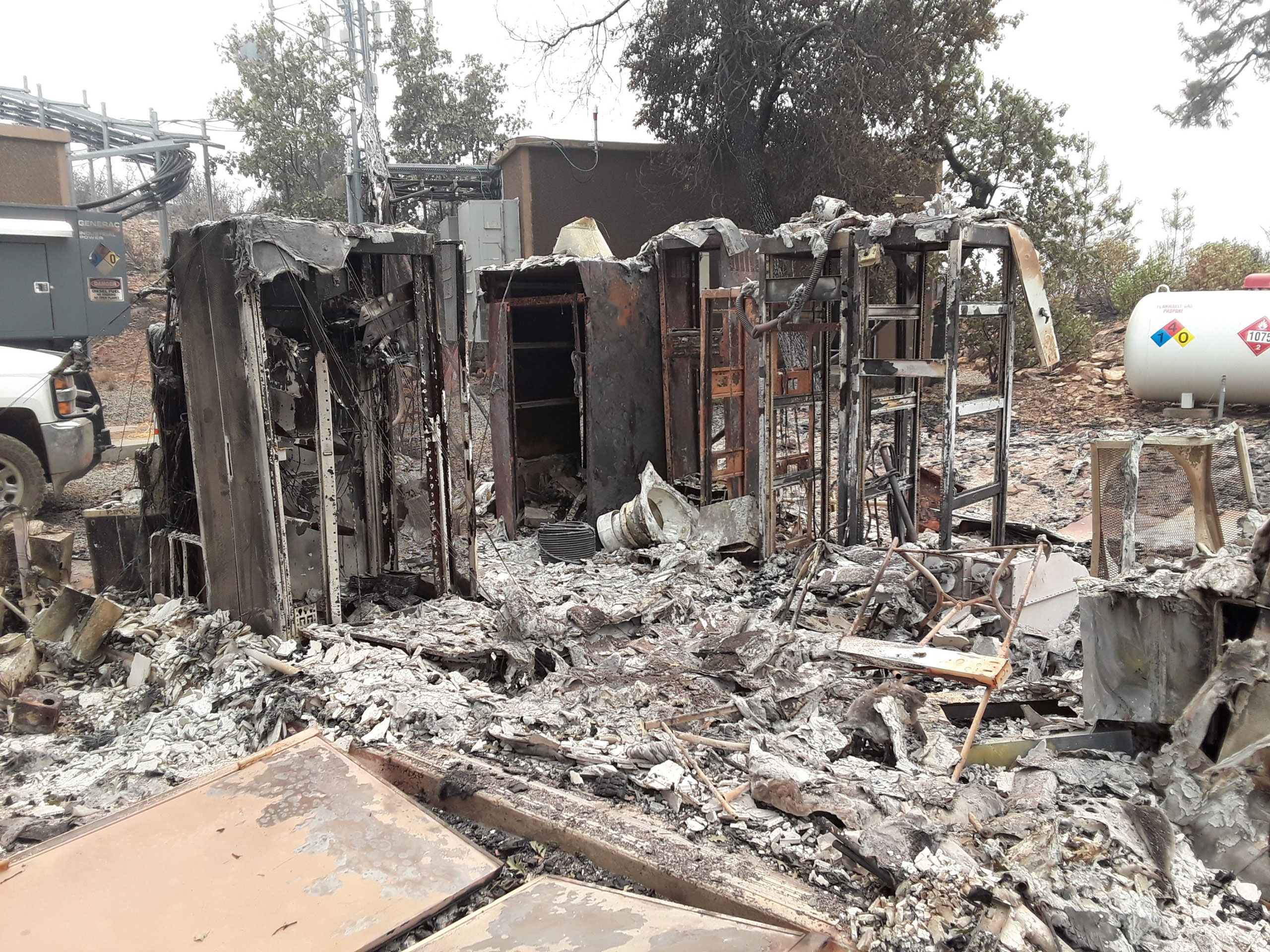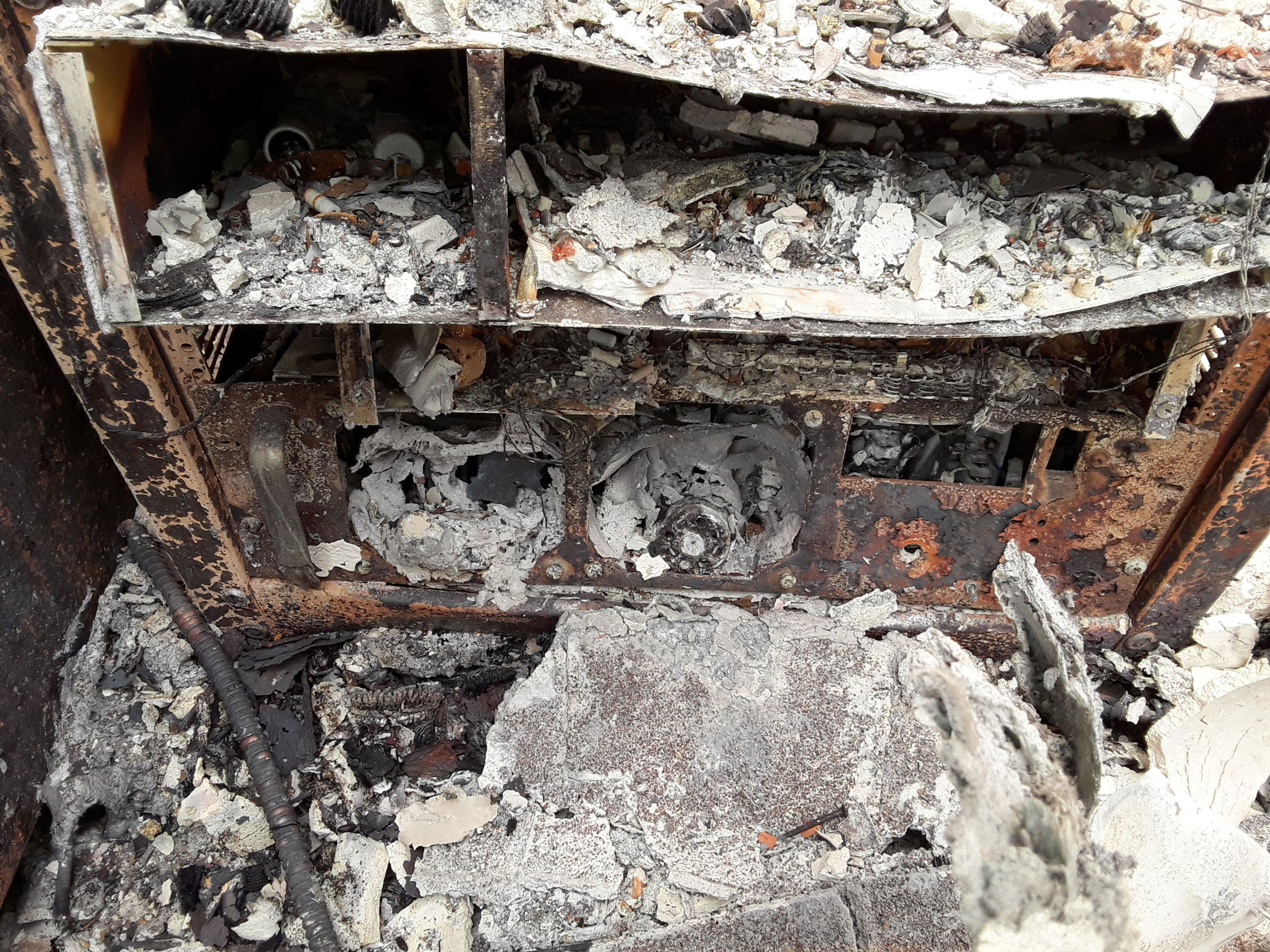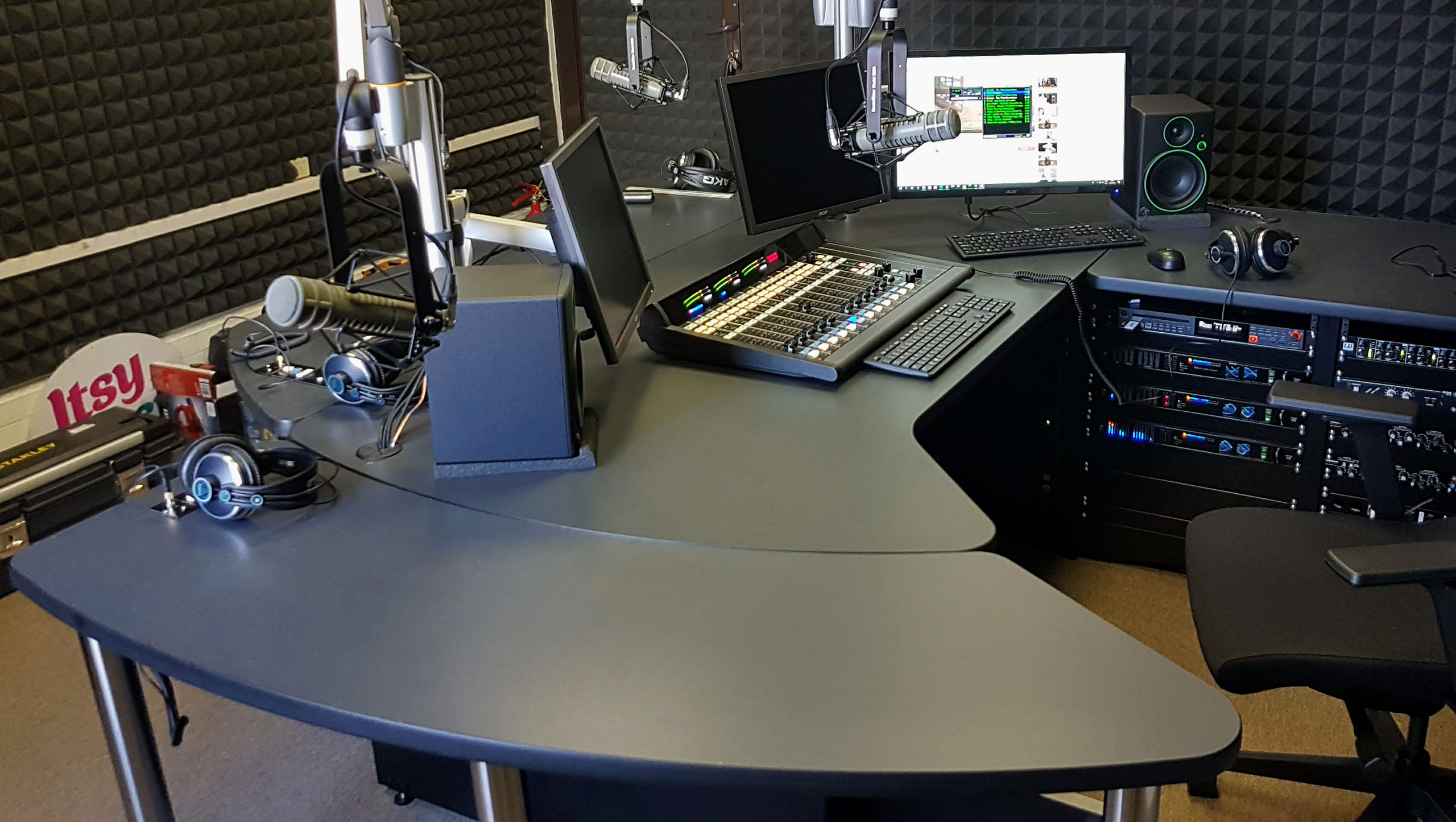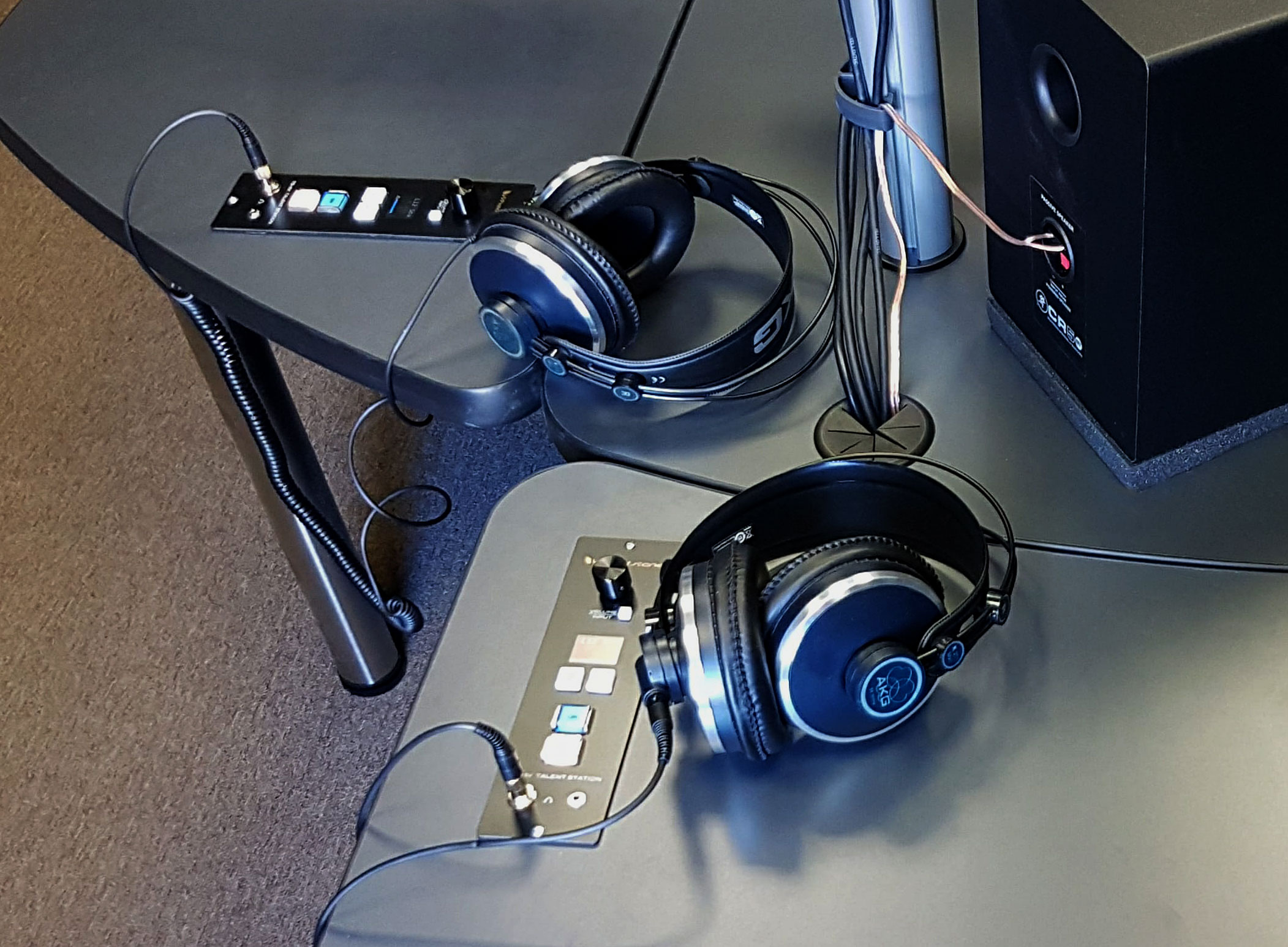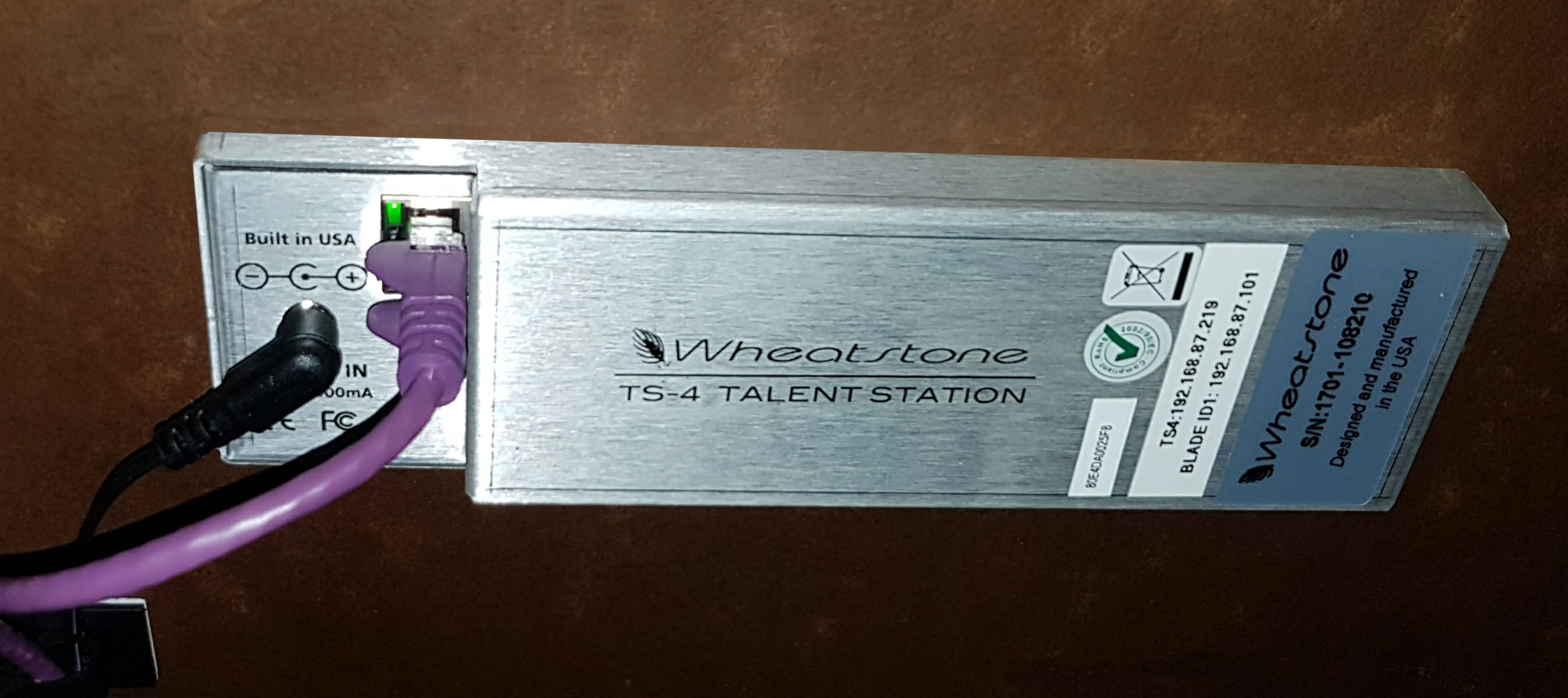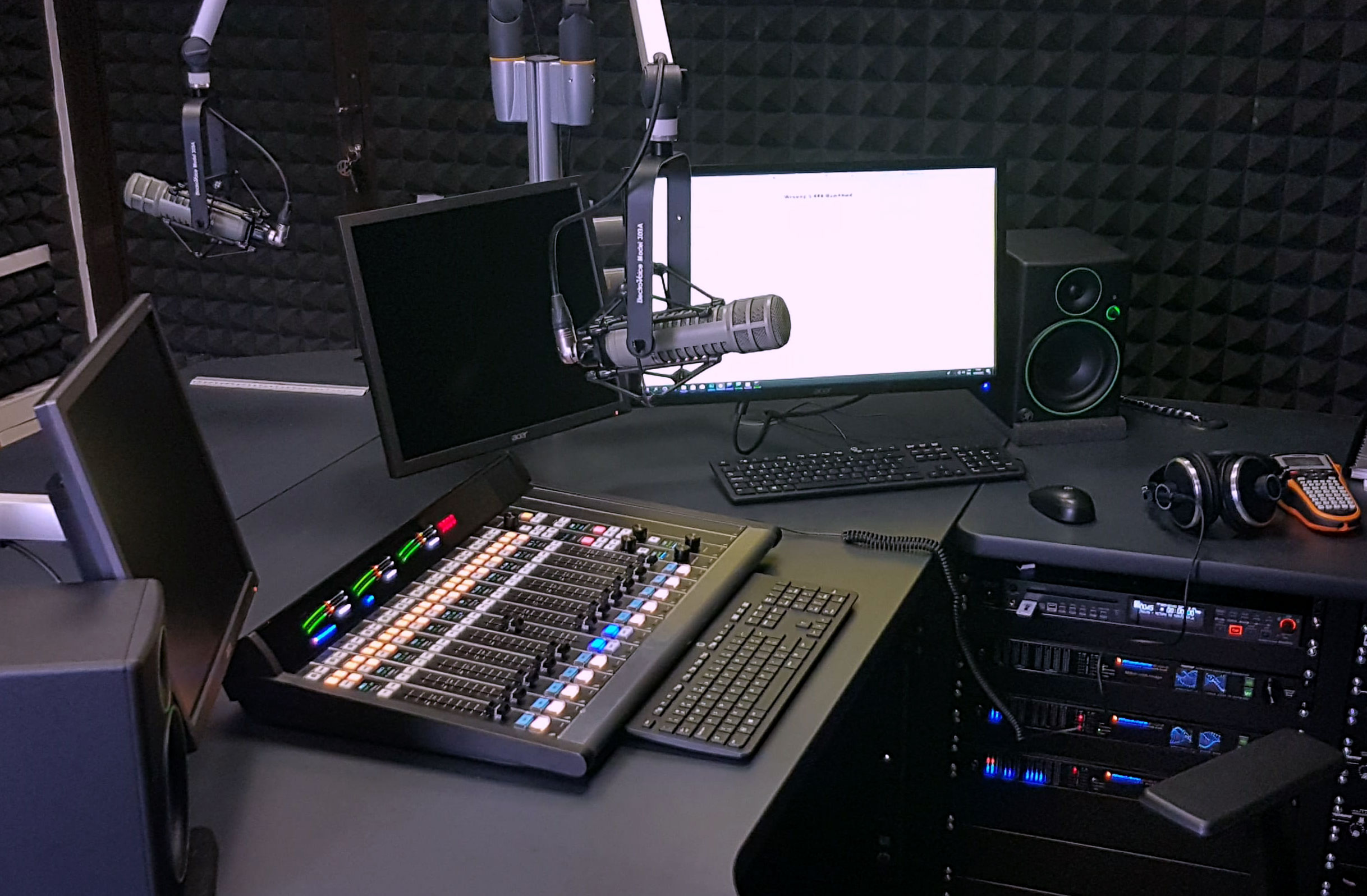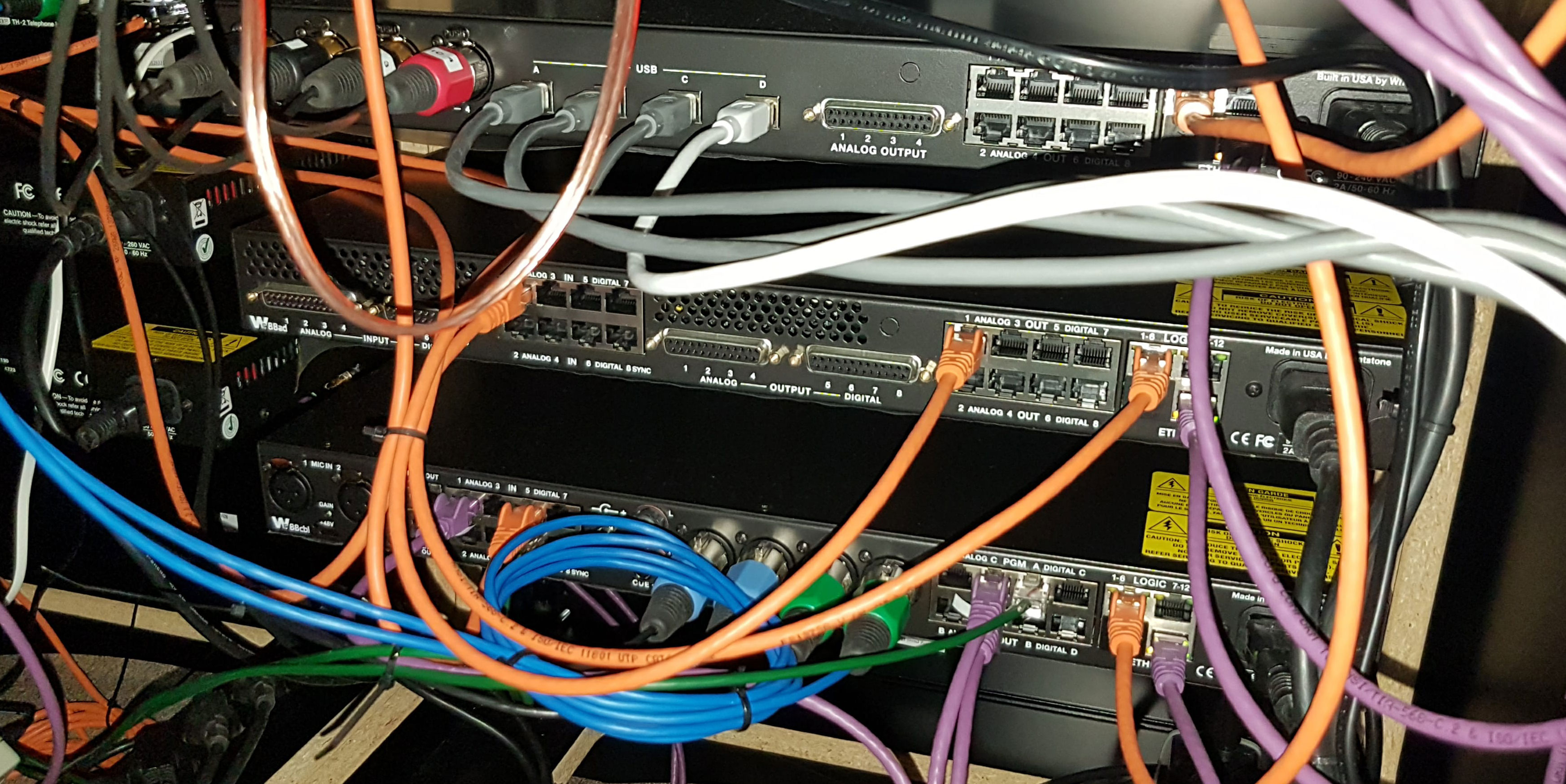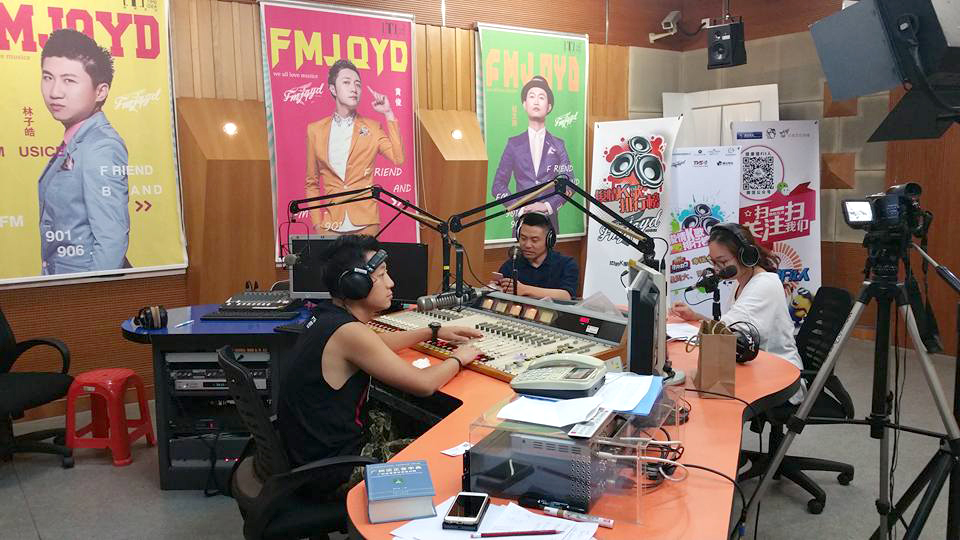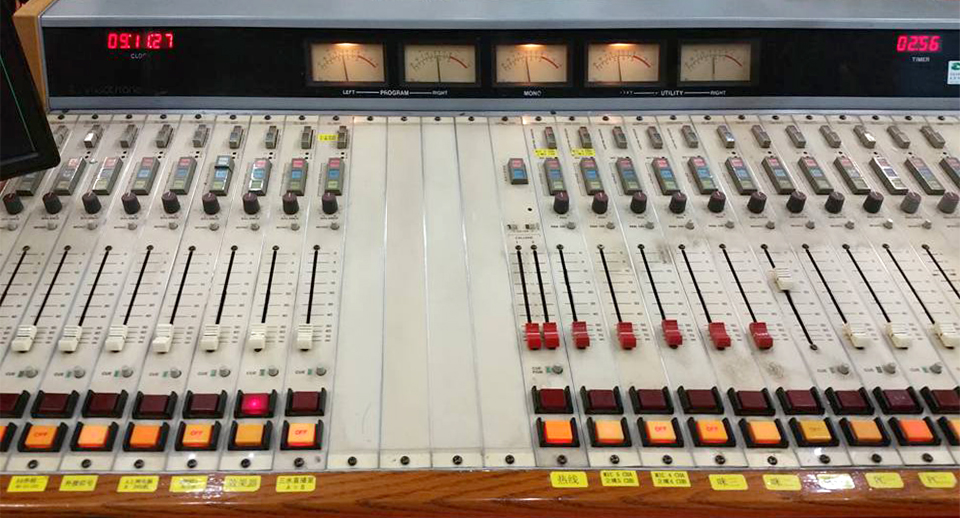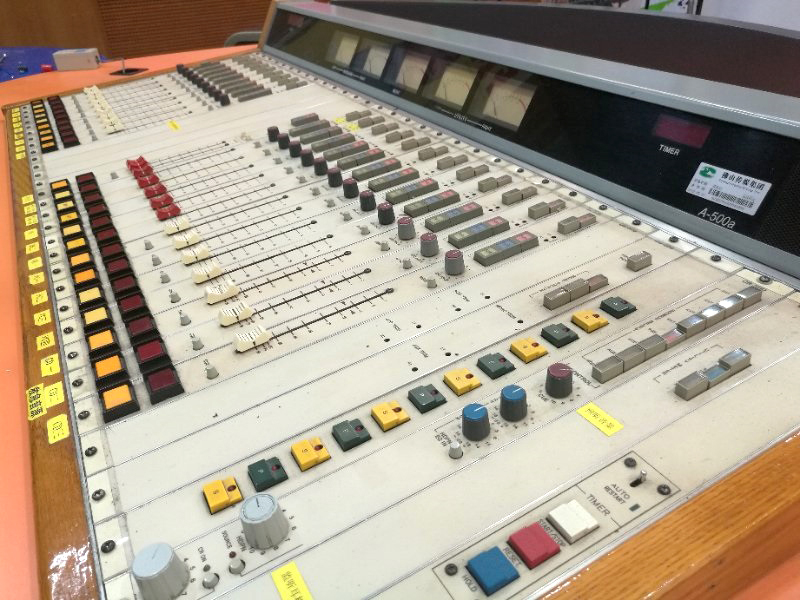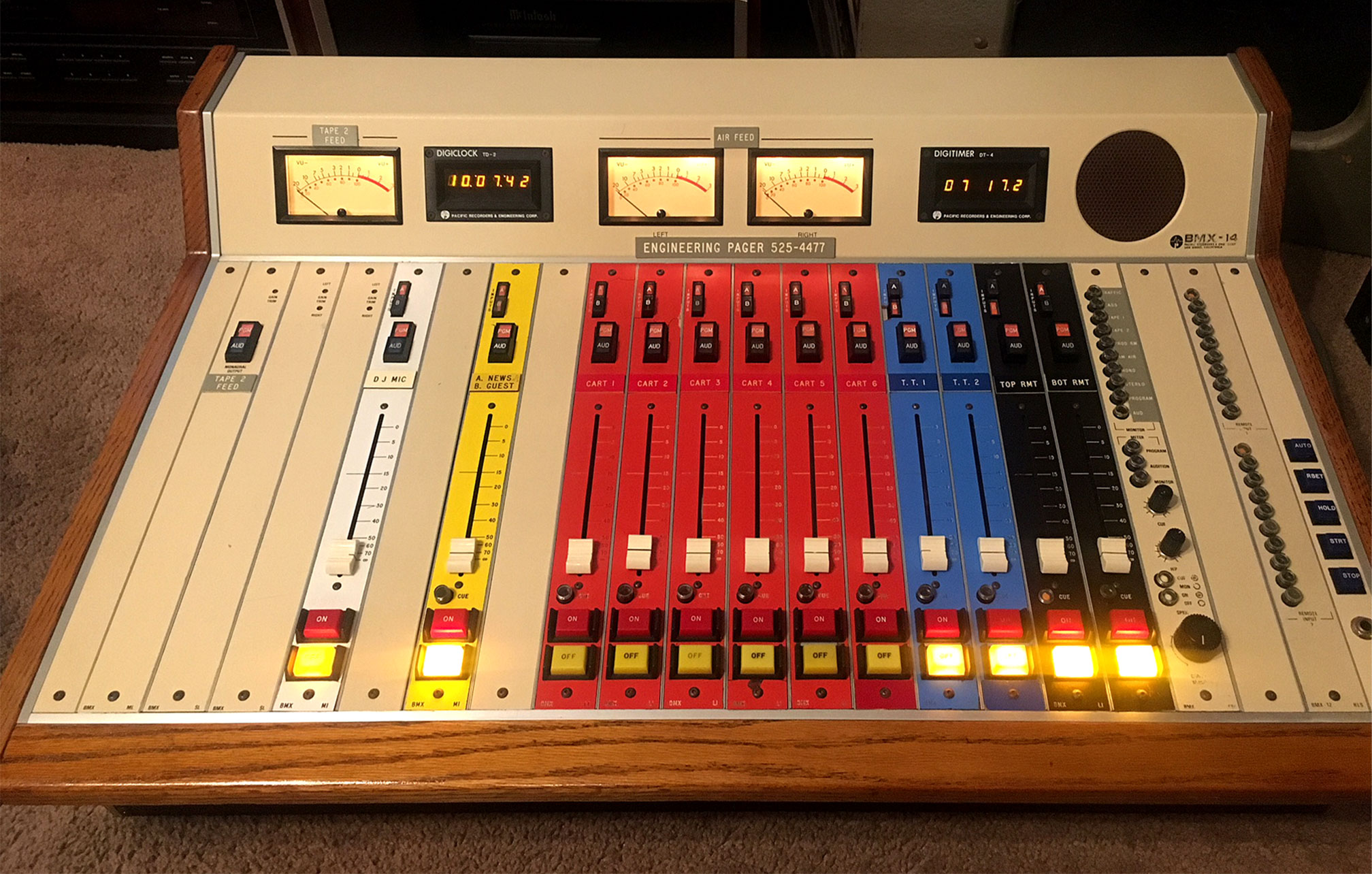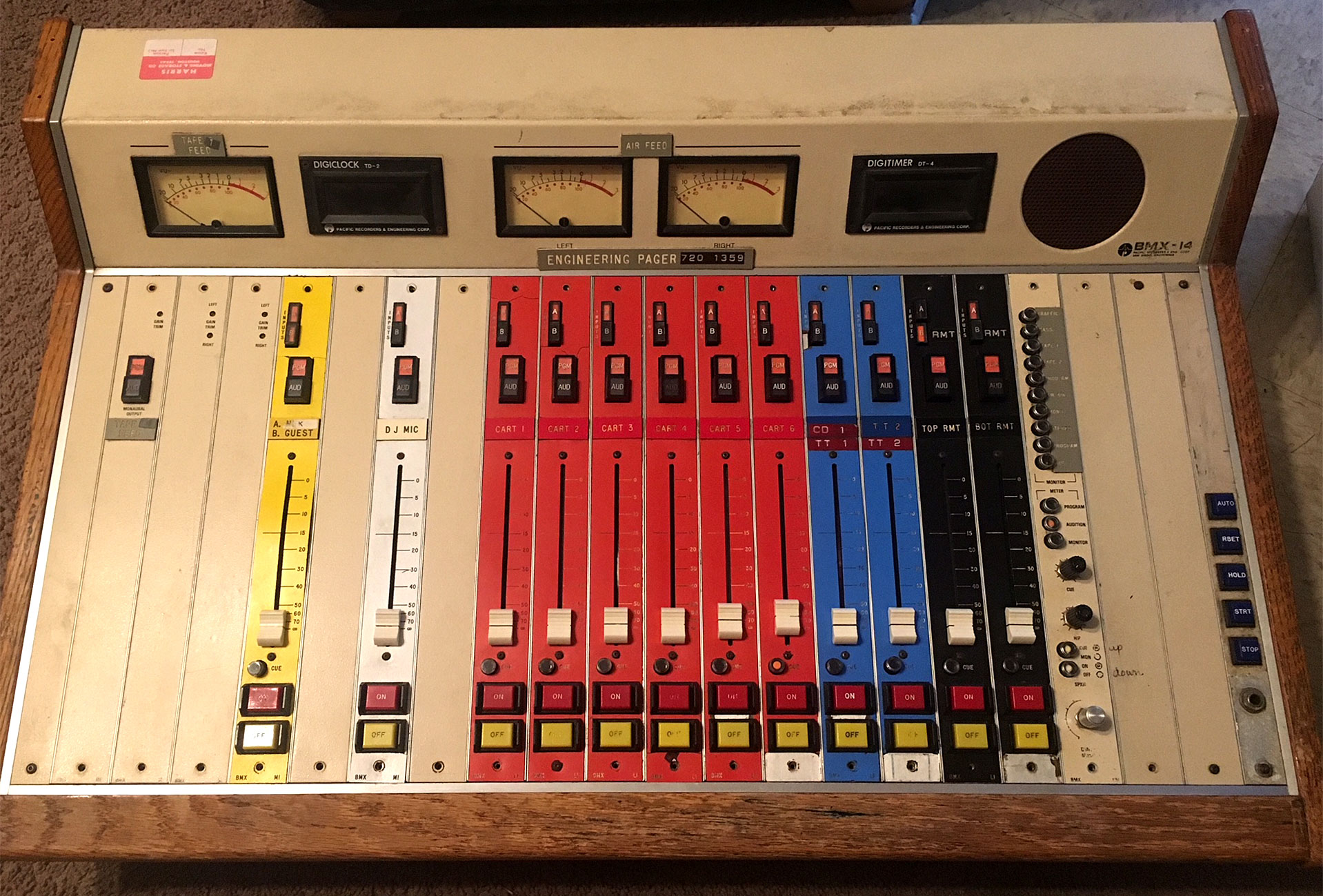WHEAT:NEWS RADIO August 2018 Vol 9, No 8
The Carr fire in Northern California that razed KEWB-FM and KNCQ-FM transmitters last month reminded us that disasters can happen in a flash. Floods. Hurricanes. Fires. S#!t happens and every broadcast studio is at risk. So here, once again, is the plan.
Think like your insurance guy.
Start with what’s most likely going to take you off the air. Flooding? Locate your main studios on the second or third floor. Tornado? Move it to the basement. Flooding and tornado? Have a studio on each floor. Every little bit of precaution helps. We know of a few broadcasters in Florida who are using optical fiber throughout instead of copper cabling as one more safeguard against a lightning hit, for example.
Reestablish islands of reliability.
Studio networks have a way of expanding, and those so-called islands of reliability could now be one large landmass the size of Australia. If one studio goes down, they all will. Just about any topology can provide some isolation between studios if you strategically place smaller or edge switches throughout. Better still, a true distributed network will give you more points of recovery should the unthinkable happen. For example, each I/O BLADE in our WheatNet-IP audio network carries a complete map of the entire connected network in its onboard memory. All it takes is one I/O BLADE anywhere in the network to automatically reestablish connectivity in the event of a disaster.
Leave enough network ports open on switches.
If you’ve added to your audio network, you might have used up all those switch ports you thought you’d never use for an added news station here, another announcer position there. If that’s the case, our field engineers suggest you redistribute the workload more evenly across your existing switches, or add one or two more edge switches. Should a flood or fire take out one switch, you will have enough ports on another switch to accommodate anything that’s left hanging.
Fireproof network cabling.
Don’t add fuel to the fire. Ideally, Ethernet cables should carry a plenum fire rating. This little extra insurance could make all the difference between containing a fire to one studio or a fire that wipes out your entire facility.
Use separate circuit breakers.
True story: one of our larger network installations involved an elaborate web of interconnected edge switches segmented to dual redundant core switches to isolate studios. Only problem was, those core switches were racked up a mere two feet from each other … on the same circuit breaker. Luckily, an astute Wheatstone field engineer caught the error before it became a problem. Make sure you’re setting up islands of reliability all the way to the circuit breaker.
Create a remote access path.
Do you have a secure path to remotely access the studio in an emergency? If not, you should. A separate line into the studios could very well be your only lifeline to the outside world in an emergency, and it could provide outside access to the studios in order to manage a disastrous situation.
Empower your network.
Make sure your studio network knows what to do in an emergency. It should be able to detect silence in the program chain and know which studio or source to switch over to the instant it happens. In the case of WheatNet-IP audio networks, this can be set up easily using our software. The hardware I/O units are already self-empowered; if a disaster should take out an I/O BLADE or group of BLADEs, the other BLADEs in the network will automatically reconfigure to continue operating as usual.
Talk to your network …
so you can detect issues before they become a problem. Your audio network should have admin tools for this purpose. One of the more powerful advantages of the WheatNet-IP audio network is being able to monitor each I/O connection point in the network using SNMP-based management software. This is useful for alerting if a particular port is dropping packets or if a device is heating up and about to fail. Each WheatNet-IP BLADE has a unique Management Information Base (MIB) with hundreds of data points for tracking bitrates, temperatures, etc.
Backup. Backup. Backup.
Our field engineers suggest you back up your crosspoints on a regular basis and put this data on a thumb drive or on a server that is backed up on a cloud somewhere. In fact, we recently added a crosspoint backup feature to our system software for this purpose. And while we’re on the subject of backups, always keep a working backup generator at the studio and a backup audio recording at the transmitter site so that if you should lose connection between the studio and transmitter site, you haven’t left your listeners in the lurch. We now offer an optional built-in audio clip player for our BLADE-3s that can be used to put emergency audio on the air. The player can be triggered manually or automatically following a period of silence detected by the BLADE-3.
Have an exit plan.
But take your listeners with you! If you have a WheatNet-IP audio network, it’s almost as easy as grabbing an I/O BLADE off the rack and connecting it to a live microphone. You might not always be able to find an Internet or hot spot connection, but in a lot of cases you will. As extra insurance, you can also keep an EDGE unit on hand along with an unlicensed-frequency IP wireless radio system to give you line-of-sight connectivity to the transmitter should you need it. That could make all the difference if you’re the only one on the air talking your listeners through that big tornado or hurricane or other contingency.
The Latest at IBC 2018. See it. Hear it.

We’re all about studio virtualization and optimization this IBC show. Stop by Stand 8.C91 to see what broadcasters are putting on-screen. Ask about our ScreenBuilder virtual development platform, our LXE Forever Console, and how you can optimize your studio operations using WheatNet-IP audio consoles and networking. While you’re at it, be one of the first to hear the new X4 audio processor. See you there, Wheatstone Stand 8.C91.
 Also, be sure to stop in at Processing Freakday 2018 where our Steve Dove and Mike Erickson will be presenting the latest advancements in audio processing. It’s happening Sunday, 9 September, Weerselo, The Netherlands. Our Jay Tyler will also be presenting important information on AES67 during Processing Freakday this year.
Also, be sure to stop in at Processing Freakday 2018 where our Steve Dove and Mike Erickson will be presenting the latest advancements in audio processing. It’s happening Sunday, 9 September, Weerselo, The Netherlands. Our Jay Tyler will also be presenting important information on AES67 during Processing Freakday this year.

Your IP Question Answered
Q: We’re going to be updating our studio within the next year. We like the idea of having a main board and maybe adding virtual news workstations at some point. But we’re concerned that a main board will lock us into fixed functions for years to come.
A: One of the more exciting developments to come out of the virtualization movement is this idea of being able to change hardware similar to the way we change things in software. It started with touchscreens on the meter bridge, and these have gotten quite sophisticated in recent years. The touchscreens on our IP-64 large-format mixing console and our reprogrammable LXE console, for example, are very similar to how you might navigate your iPad or iPhone. But that is just the beginning of how we’ve been able to transfer what we know about software apps to hardware. The LXE console is our first reconfigurable console; it is possible to totally reconfigure any control or function on the board, at any time. So instead of the surface knobs serving one purpose throughout the life of the board, for example, any physical button anywhere on the LXE can be given new values. By making hard surface controls completely programmable – and continually re-programmable – through a GUI similar to how we develop virtual screens, we can say goodbye to fixed hardware. This is revolutionizing how studios are built and managed over the long term.
Kids can be a tough audience.
Any station that broadcasts kids programming has our respect. We have an extra dose of respect for Itsy Bitsy, which has been broadcasting kids’ programming to the greater part of Romania for 12 years.
For most of those years, Itsy Bitsy originated programming from an analog studio. That had to be tough on talent. Not only were they performing to all those little minds that don’t miss a thing, but they had to do it from a studio that made it impossible to do anything out of the ordinary – and we all know how out of the ordinary kids can be! Two months ago, this little station upgraded to an all-AoIP WheatNet-IP audio network and L-12 console, along with three talent stations and a few M4IP-USB mic processors.
“The most obvious difference now is I can make changes on the fly without changing physical cables,” commented Liviu Preda, Itsy Bitsy’s chief engineer. This is important for all the usual reasons as well as a somewhat unusual one. Preda’s job requires him to travel extensively throughout the country tending to transmitter issues; Itsy Bitsy broadcasts on 19 frequencies covering more than 60 percent of the country. He says AoIP frees up his time to travel, rather than stick around in the studio to wire up the next performance.
For this audience especially, every performance is truly a theater of the mind. Itsy Bitsy presenters are more actors than announcers, and the new WheatNet-IP audio networked studio means they can change up sources, add voiceovers, and perform as never before without changing wires or reconfiguring the board. Three TS-4 talent stations make it possible to bring in voice talent, and the main L-12 IP networked console is so easy to operate, Preda says that many of the presenters no longer need a board operator to man the board. They are able to easily run the L-12 in addition to their regular acting duties.
Preda installed the WheatNet-IP system and new QuickLine furniture himself with few issues (except, perhaps, a little bit of a learning curve with the Cisco switch).
Foshan Radio in Guangdong, China, retired its faithful A500 console that had been in service for more than 27 years.
For those of you familiar with Wheatstone, you’ll recall that the A500 was the very first broadcast console we made. (We started out making consoles and compressors for pro sound, but that’s another story!)
On July 30, Famous Foshan Radio DJ Cha Dao gave the A500 a warm on-air send-off, telling listeners that he will miss the board that has been his steady companion through countless shows. Even today, he said, it is “in good condition.”
The A500 was installed in 1991 for Foshan’s new FM channel at the time, and has moved with the station to four locations over the years. More than a decade later, a Wheatstone Bridge TDM network with G-5 and G-3 consoles surfaces was installed for Foshan’s network headend.
The A500 hasstood the test of time through the rise of the Internet, four Republic of China presidents, and through an unprecedented time of economic and social change.
Foshan Radio purchased a new E-6 IP audio console with WheatNet-IP audio networking to replace the analog A500. The Wheatstone WheatNet-IP audio network is the foundation for future radio developments at Foshan, according to Foshan Radio Director Zhao Jun. “We networked our stations from different places using Wheatstone’s WheatNet-IP technology by using BLADEs in between with fiber connection,” he said.
Wheatstone introduced the A500 at the 1984 NAB show, and it remained in production for 10 years as one of the more innovative boards of its time. In the early days, we carried a square wave generator to shows to demonstrate the A500’s exceptional audio performance.
Color Me Red
This very colorful console is the legendary BMX originating from KILT in Houston. Number-one PR&E fan Scottie Rice, who started the Pacific Recorders & Engineering Fan Club page on Facebook, is in the process of restoring this 1979 board. It doesn’t have a serial number and is believed to be PR&E’s first custom-made console, laminate inserts and all. Rice ended up with this gem as part of a four-board salvage run to KFWB’s transmitter site in East Los Angeles a few years back.
It was crated at the time, so he had no idea the bad shape it was in – he said it was one of the filthiest BMX boards he’d ever seen. (Which is saying a lot, because Scottie has quite a collection of BMX boards). Later, when discussing the board with PR&E founder Jack Williams, he learned that the chief engineer at KILT had ordered the board with colored modules. As the story goes, after KILT retired the board in the 1990s, it was sent on to Group W station KFWB in Los Angeles for use in the bomb shelter studio at the transmitter there, which is where Rice rescued it.
In a weird twist of irony, the board was built in San Diego, shipped to Houston, then to Los Angeles, and is now back in San Diego where it is being restored by Scottie at his home there. In fact, the laminate covers were made by an engraving shop in San Diego not too far from where Scottie Rice lives. In these before and after pictures, you’ll see how much restoration has gone into this piece of history. Scottie has refinished the wood, stripped the frame and washed it, and cleaned all the modules. It’s almost completely restored, and it still runs!
PR&E boards have come a long way. We wonder what 1980s engineers would have thought of our DMX AoIP console with its sleek design, super quiet mic preamps, and real-time parametric EQ and dynamics on EVERY channel with no stream limits! And still made the USA! We think they’d be impressed.
Did you know you can save more than $1500 on a new PR&E DMX console? For a limited time, you can get an 8-channel DMX console with engine, I/O and software for only $4995. Contact BSW or SCMS or contact us direct at 252-638-7000 or go to PR&E Fall Sales Event.
 FREE E-Book:
FREE E-Book:
Making Sense of the Virtual Studio:
SMART STRATEGIES AND VIRTUAL TOOLS FOR ADAPTING TO CHANGE
Curious about how the modern studio has evolved in an IP world? Virtualization of the studio is WAY more than tossing a control surface on a touch screen. With today's tools, you can virtualize almost ANYTHING you want to do with your audio network. This free e-book illustrates what real-world engineers and radio studios are doing. Pretty amazing stuff.
Welcome To Wheatstone
Our Swiss distributors were in town and as we were showing them around, Mario was shooting video with his phone. Before we knew it, he'd made this lovely little video about his experience on the tour. We think it captures where we live and where we work very nicely.
Got feedback or questions? Click my name below to send us an e-mail. You can also use the links at the top or bottom of the page to follow us on popular social networking sites and the tabs will take you to our most often visited pages.

